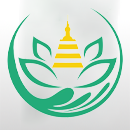ABOUT US
Scenic Introduction
Guangsheng temple is located at the south foot of huoshan mountain in the north of hongtong county. The whole complex is divided into upper and lower two temples and three parts of the spring temple. Huoshan on the temple in the south of the mountain, the ancient bai song cui, high zhi pagoda, glass glass components brilliant. Xiasi at the foot of the mountain, along with the terrain, followed by the building, the height of the temple strewn at random, layer by layer, is a group of rich changes of the temple complex. The water temple is on the west side of the lower temple, only one wall away from the temple.

Guangsheng temple is located at the top of huoshan south vein, 10 kilometers northeast of hongdong county. It is composed of mountain gate, feihong pagoda, maituo hall, daxiong hall, vilu hall, guanyin hall, dizang hall, weituo hall, wing and gallery. The temple was founded in the first year of jianhe (147) in the eastern han dynasty. In the palace of the pagoda, there are the relics of the Buddha. Inside the bottom layer of the pagoda is the bronze Buddha statue of sakyamuni, outside the pagoda there are eight bodhisattvas, four heavenly Kings to protect the dharma. After the expansion of fenyang county in the fourth year of the tang dynasty (AD 769), guo ziyi, then the king of fenyang county, visited the site and saw the beautiful mountains and waters and the unique scenery. Later it was referred to simply as "guangsheng temple". Guangsheng temple after more than a thousand years of reconstruction, the existing mainly for the Ming dynasty buildings, shape and structure still maintain the style of the yuan dynasty.
Xiasi mountain gate known as the tianwang palace, is a building type hall, three wide, deep two, single eaves top, before and after eaves and waist eaves, eaves have dougong and hanging columns, the shape of rain, form the appearance of the eaves, strange technique, not seen for his place. The temple has a large span of transverse large moon beam, although there is no beam frame inscription and inscription records, but from the structure and technique, belongs to the yuan dynasty architecture. Hall before and after the door, "king of heaven" plaque is not in the front door, are embedded in the back door, it is puzzling. Temple plastic has four days as the king, not two opposite, but back to back, there are screens between, is alone.
The water temple was built during the reign of zhenguan in tang dynasty. It was destroyed by a great earthquake during the yuan dynasty. It was rebuilt in the sixth year of yanyou (1319 AD). Yuansu under the eaves two embrace, dignified and solemn. Inside the hall size statue nine, the central water god should be king, two sides of the four boys and girls, plastic workers are very exquisite, fit, demeanor quiet, realistic image. The four officials of the water god under the stage have different faces, delicate and appropriate to show the inner activities of the characters, when the works for the building of the temple.
Guangsheng temple is famous for its three wonders, one wonder and one special, three wonders, namely the world's first tower flying rainbow glass tower, the rare rare edition of "zhao cheng gold collection", the Chinese treasure yuan dynasty opera murals; A strange namely tang dynasty left and right twist ancient cypress; One is the peculiar architecture of guangsheng temple. The water temple is a popular sacrificial temple to huoquan god, including mountain gate (stage of yuan dynasty), instrument gate, Ming ying palace and other buildings. In "Ming ying wang dian", in addition to plastic Ming ying wang statue and maid, minister and other clay sculpture, inside the four walls are also painted with a variety of content of the yuan dynasty murals. This is "the only fresco in ancient China that does not take Buddhism and Taoism as its content". On the east side of the south wall is painted a drama mural of the yuan dynasty, which is the only large-scale drama mural of the yuan dynasty found in our country at present. In 1998, the painting was included in the Chinese history textbook along with the pictures of ancient walls playing ball games.


